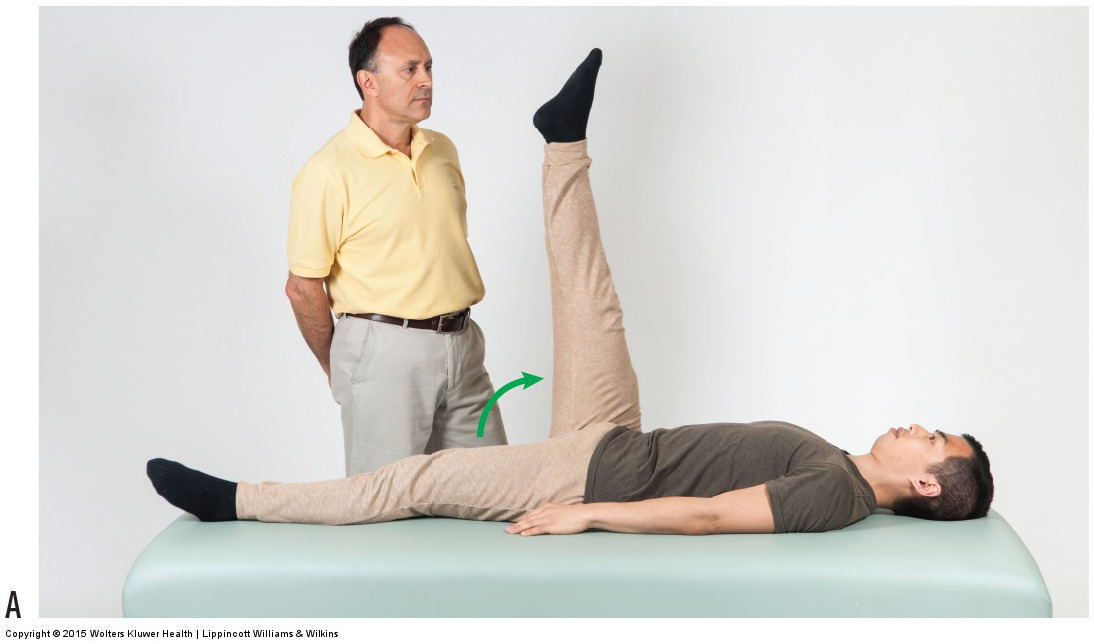Signs and Symptoms of Low Back Muscle Spasming
The most common signs and symptoms of spasmed musculature of the back are pain, tightness, and restricted motion. Pain will usually be local at the area of tightness, but might also refer into adjacent regions including the lower extremities if active myofascial trigger points are present. The client/patient might experience a feeling of tightness at rest if the spasming is strong enough, but will usually feel the tightness when attempting to move the back; pain will also usually increase with motion. Restricted/decreased motion, if present, will accompany the tightness.
Decreased range of motion will be experienced on the opposite side of the joint from the direction of motion. For example, tight posterior musculature can restrict the anterior motion of flexion. If the tightness is in the back right quadrant, tightness and decreased range of motion will also likely be experienced with left lateral flexion. Similarly, tightness in the left posterior quadrant will likely restrict right lateral flexion. And if a rotator muscle is tight, the opposite-side rotation might be restricted.
Assessment/ Diagnosis of Low Back Muscle Spasming
The assessment/diagnosis for low back muscle spasming begins with the verbal history. It is important to ask about any underlying conditions of the spine as well as possible past macrotraumas and what postures the client/patient often assumes at work or home. Postural evaluation can also be very informative. Any deviated posture may indicate tightness of musculature. A lateral view assessment is important. Evaluate the degree of pelvic tilt and lumbar lordosis. From the posterior view, look for either an iliac crest to be higher on one side or for a scoliotic curve.

Active straight leg raise orthopedic test. Permission: Joseph E. Muscolino. Manual Therapy for the Low Back and Pelvis – A Clinical Orthopedic Approach (2015).
Trunk (thoracolumbar) range of motion (ROM) should then be performed (see Table 1). ROM can be active or passive. Low back muscle spasming will usually result in decreased motion. For example, if the client/patient has decreased left lateral flexion, this indicates that the right lateral flexion musculature is likely tight. This should then be confirmed by asking the client/patient where they feel the restriction. Restriction felt on the right side confirms tightness of right lateral flexor musculature.
Orthopedic testing for low back muscle spasm can include straight leg raise. Active straight leg raise will show positive (judged by local low back pain) for a lumbosacral strain, sprain, and tight spasmed low back muscles. Passive straight leg raise will show positive for a lumbosacral sprain (and perhaps will pull and show slightly positive for tight spasmed low back muscles). As a rule, positive active straight leg raise and negative straight leg raise indicates either a low back muscular strain or tight spasmed low back muscles.
Low back muscle spasm (tightness) should then be further confirmed by muscle palpation. Muscle palpation will also help to determine exactly which muscles are tight and/or whether myofascial trigger points are present. It is especially important to palpate and assess the deeper transversospinalis (multifidus) musculature in the laminar groove as well as the quadratus lumborum and psoas major. Because tight musculature will restrict joint motion, it is also a good idea to evaluate joint motion with joint motion palpation.
Table 1: Ideal ranges of motion of the trunk (thoracolumbar spine) from anatomic position:
- Flexion: 85 degrees
- Extension: 40 degrees
- Right and left lateral flexion: 45 degrees
- Right and left rotation: 35 degrees
Differential diagnosis/assessment of low back muscle spasming
Tight back musculature must be differentially diagnosed/assessed from other conditions of trunk musculature such as strain, sprain, and tendinitis. It should also be differentially diagnosed/assessed from possible joint conditions such as joint dysfunction, degenerative joint disease, facet syndrome, or a pathologic disc. If myofascial trigger points are present, resulting in upper or lower extremity referral, then it might also be necessary to differentially assess local conditions of the extremities that might also present with similar symptoms. However, it is important to realize that tightness of back musculature is usually present to some degree with most every other pathologic condition of the thoracolumbar spine. Therefore, the challenge is to determine whether another, possibly more serious condition is coexisting with the muscle tightness.


